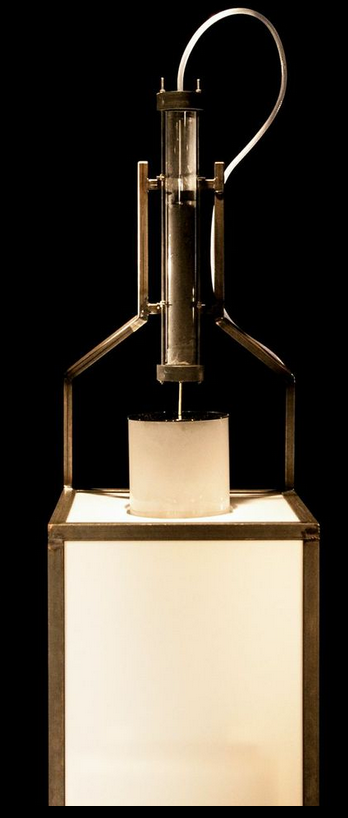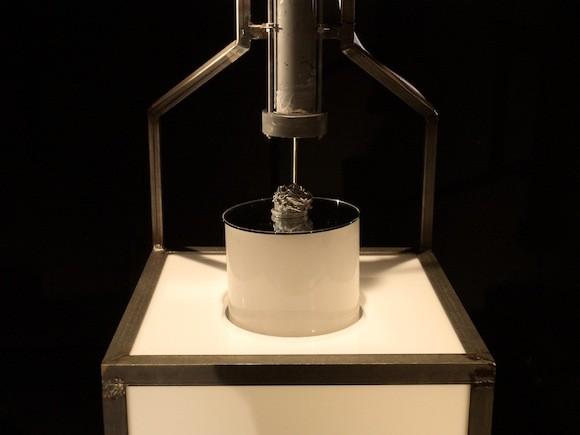 Art and 3D printing go together like peas and carrots, or Big Bird and Snuffleupagus, at least as of late. We have seen so many amazing ways in which artists have utilized the complexities of 3D printing to create spectacular pieces of work featuring elements impossible to achieve any other way. We have also seen artists turn the entire 3D printing process into art itself, as we saw last week when a man named Reid IV printed poetry in front of dozens of individuals at a MakerBot store in New York City.
Art and 3D printing go together like peas and carrots, or Big Bird and Snuffleupagus, at least as of late. We have seen so many amazing ways in which artists have utilized the complexities of 3D printing to create spectacular pieces of work featuring elements impossible to achieve any other way. We have also seen artists turn the entire 3D printing process into art itself, as we saw last week when a man named Reid IV printed poetry in front of dozens of individuals at a MakerBot store in New York City.
What happens though, when artists build their very own 3D printer just for the production of a particular art project? ‘EXtrace’ is what happens. A man named Vincent Brinkmann has teamed with Jan Sengstake to use 3D printing in a way none of us could have ever imagined.
EXtrace is a 3D printer which fabricates clay sculptures using data transmitted from the world’s largest internet node. The two new-media artists, both students at the University of Arts in Bremen Germany, wanted to merge modern telecommunications with one of humanity’s first storage mediums, the clay plate.
“Our work is highly related to connections between the physical and the virtual,” explained Brinkmann to 3DPrint.com. “We are experimenting with different layers of information, meanings and interactions between human and machine. And we’re debating about technological impacts on society.”
In order to achieve their goals with this project, the two artists had to construct their own custom clay-based 3D printer. The printer consists of a metal frame with a mount for a cylindrical extruder in which the moist clay is stored prior to extrusion. The build plate is a circular mirror which rotates on an axis when the machine turns on.
They then feed data collected from De-Cix, a Frankfurt Germany internet node which is one of the largest in the world in terms of data throughput, into the EXtrace 3D printer. Computer algorithms, written by the two artists, translate that data into x, y and z-axis movements of the motors making up the printer, as compressed air pushes the clay out through a 2mm nozzle, onto the circular build plate. All the while, the build plate rotates, slowly creating clay sculptures based on the data throughput.
“The clay sculptures display the frequency of data flow of a 2 day-chart of the internet node,” explained Brinkmann. “The printed object is a container for the data that passed through the node in a 2 day-period. A series of the sculptures symbolize an archive that characterizes the time of an advancing information society.”
Each sculpture created, represents the traffic through the node at any 2-day interval in time. The artists were able to capture modern telecommunication data via a clay printout. When I asked Brinkmann if a layperson like myself could read and understand the data based solely on the printed out clay, he explained:
“The thickness of the sculptures represent the data throughput. This is the most basic layer of interpretation. For Example: We print a thicker container for data when there is more traffic on the internet node.”
Both Brinkmann and Sengstake have no future plans for the EXtrace clay printer at this time, and are currently working on other interesting projects. Let’s hear your thoughts on this artistic representation of both modern and ancient data storage and movement, in the EXtrace 3D printed art forum thread on 3DPB.com. Check out the video below of the printer in action.

Subscribe to Our Email Newsletter
Stay up-to-date on all the latest news from the 3D printing industry and receive information and offers from third party vendors.
You May Also Like
Precision at the Microscale: UK Researchers Advance Medical Devices with BMF’s 3D Printing Tech
University of Nottingham researchers are using Boston Micro Fabrication‘s (BMF) 3D printing technology to develop medical devices that improve compatibility with human tissue. Funded by a UK grant, this project...
3D Printing Webinar and Event Roundup: April 21, 2024
It’s another busy week of webinars and events, starting with Hannover Messe in Germany and continuing with Metalcasting Congress, Chinaplas, TechBlick’s Innovation Festival, and more. Stratasys continues its advanced training...
3D Printing Webinar and Event Roundup: March 17, 2024
It’s another busy week of webinars and events, including SALMED 2024 and AM Forum in Berlin. Stratasys continues its in-person training and is offering two webinars, ASTM is holding a...
3D Printed Micro Antenna is 15% Smaller and 6X Lighter
Horizon Microtechnologies has achieved success in creating a high-frequency D-Band horn antenna through micro 3D printing. However, this achievement did not rely solely on 3D printing; it involved a combination...






























